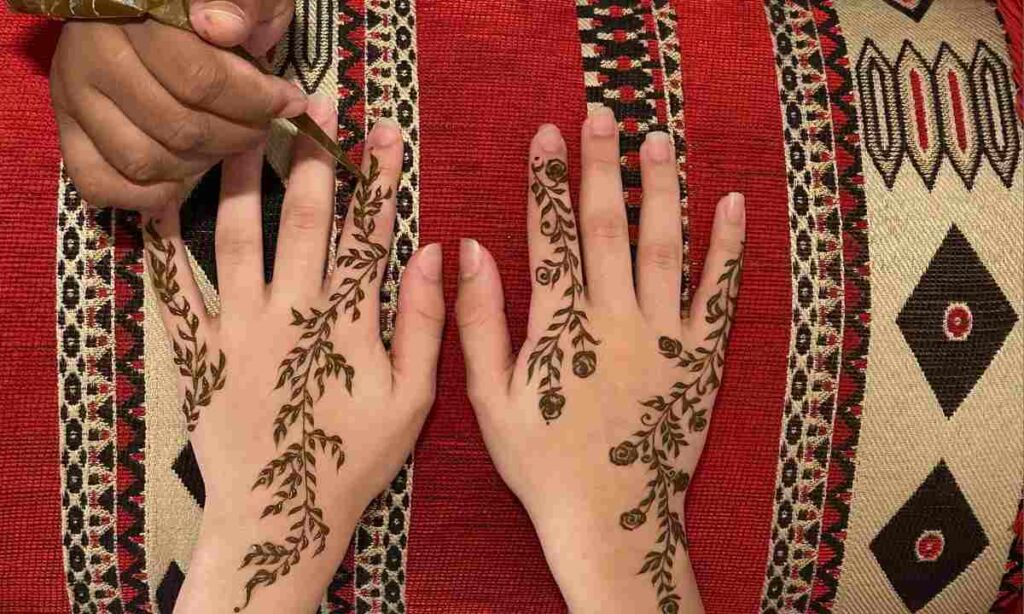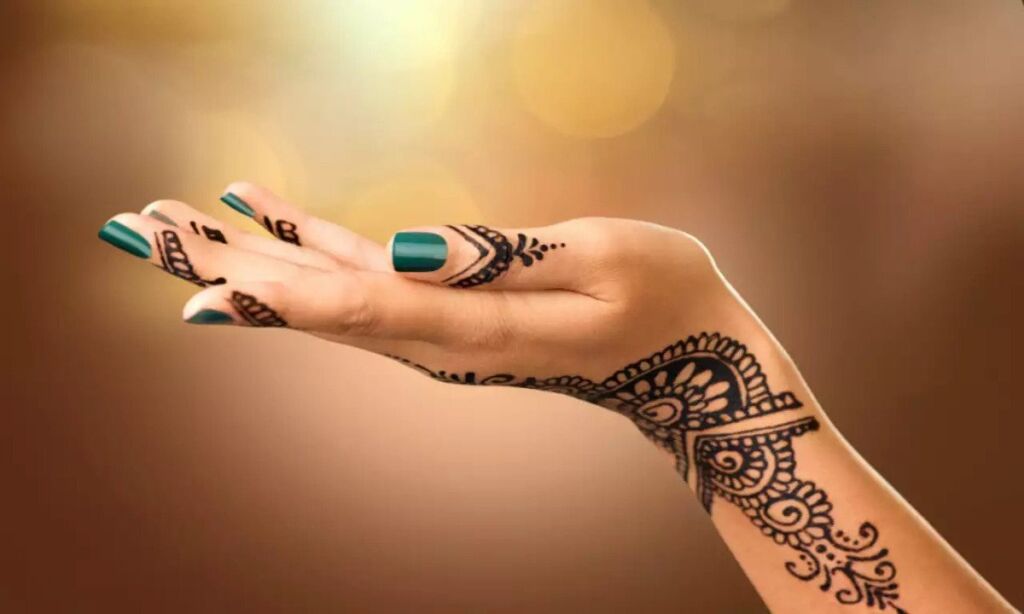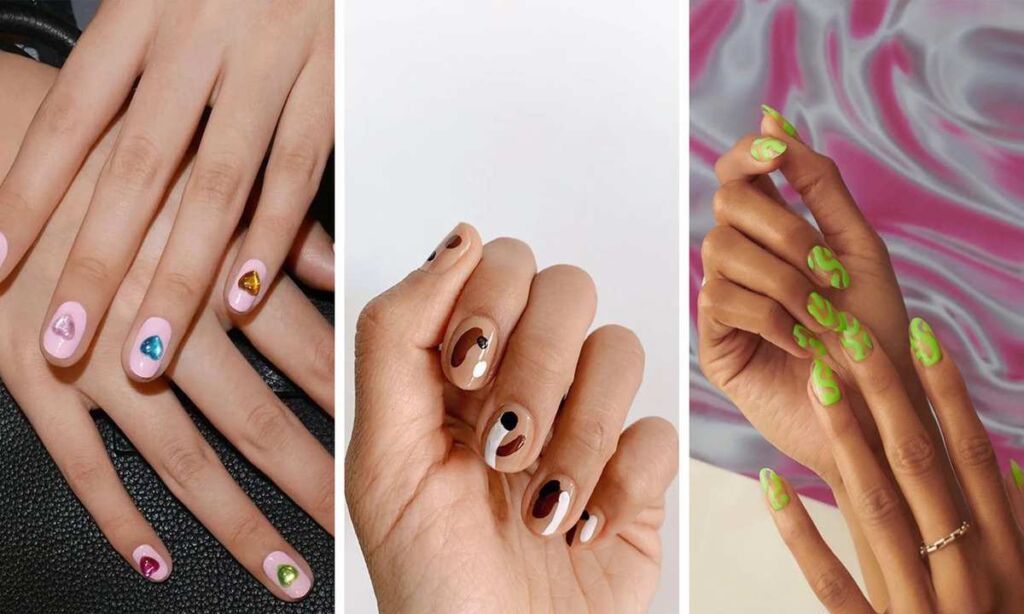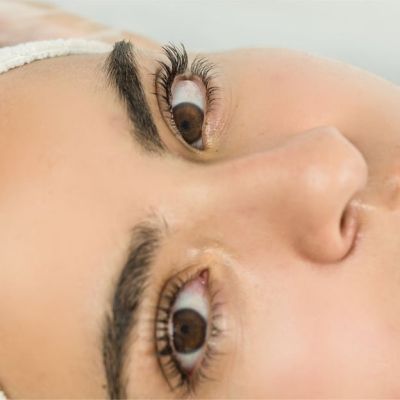
In Qatari nail art, henna designs hold profound cultural significance, weaving a tale of tradition and beauty. These intricate patterns, often applied to nails, not only serve as a captivating form of self-expression but also reflect the rich heritage of Qatar. Henna, with its deep roots in Middle Eastern culture, brings a touch of elegance to Qatari nail art, embodying stories of celebration and identity. At Diva Salon, this cultural fusion comes to life, where skilled artisans blend modern nail art techniques with the timeless allure of henna designs, creating a unique and breathtaking experience for individuals seeking to celebrate tradition with a contemporary flair.
Historical Roots of Henna in the Middle East:
To truly grasp the significance of henna in Qatari nail art, it’s essential to travel back in time and explore its historical roots in the Middle East. Henna, derived from the Lawsonia inermis plant, has been used for centuries in various cultures for body art, rituals, and celebrations. Its use is deeply ingrained in Middle Eastern traditions, symbolizing good luck, joy, and positive energy.
In Qatar, henna has been an integral part of cultural and social practices. Traditionally, it was applied during weddings, religious celebrations, and other significant events. The intricate designs served not only as adornments but also as symbols of blessings, protection, and the joyful spirit of communal gatherings. Over time, the artistry of henna evolved, weaving a tapestry of patterns that carry stories of heritage and identity.
The Intersection of Henna and Nail Art in Qatar:
The seamless integration of henna designs into Qatari nail art showcases the adaptability of this ancient art form. Nail art itself has gained popularity as a form of self-expression, and henna-infused designs offer a distinctive touch that sets Qatari nail art apart.
One reason for this synergy is the meticulous nature of henna patterns. The precision required to create detailed designs on the skin has paved the way for artists to experiment with the intricate nature of henna on a smaller canvas – the nails. This fusion of ancient henna motifs with contemporary nail art techniques results in a mesmerizing visual symphony.
Symbolism in Qatari Henna Nail Art:

Qatari Henna Nail Art at Diva Salon encapsulates a rich tapestry of symbolism, blending traditional motifs with modern aesthetics. Intricate patterns carry meanings of love, protection, and cultural pride, offering clients a personalized narrative on their nails. Diva Salon’s nail services provide a unique fusion of cultural storytelling and contemporary beauty, creating an immersive and individualized experience.
In Qatari nail art, individuals often choose henna designs that resonate with their personal stories or mark significant life events. The customization of these patterns allows for a deeply personal connection, turning the nails into a canvas that narrates tales of joy, love, and cultural pride.
The Rise of Diva Salon: A Haven for Qatari Nail Art:
Diva Salon stands as a pinnacle in the evolution of Qatari Nail Art, fusing tradition with modernity. A haven for creativity, the salon not only showcases skilled artists crafting henna-infused designs but also extends its services to the comfort of clients’ homes. Embracing convenience, Diva Salon’s home services ensure that the enchanting allure of Qatari henna nail art is accessible and personalized, making beauty and tradition seamlessly integrated into the lifestyle of its clientele.
Diva Salon’s Approach to Qatari Henna Nail Art:
Diva Salon’s approach to Qatari Henna Nail Art is a delicate fusion of tradition and innovation. The salon not only excels in crafting intricate designs but also emphasizes nail health, offering care tips tailored to Qatar’s harsh weather. Suggestions include moisturizing cuticles, protecting nails from excessive sun exposure, and using quality nail products. Diva Salon ensures that Qatari Henna Nail Art is not only visually captivating but also promotes overall nail wellness in the challenging climate.
The artists at Diva Salon are well-versed in the intricacies of henna designs, drawing inspiration from traditional Qatari patterns while infusing a touch of innovation. The salon offers a diverse range of henna-infused nail art options, ensuring that each client’s journey is a personalized exploration of culture and style.
Cultural Identity Through Nail Art:

Qatari henna nail art, as curated by Diva Salon, has become a powerful means for individuals to express their cultural identity. Clients often seek designs that resonate with their familial history or showcase a particular aspect of Qatari heritage. The salon provides a platform for these narratives to unfold, turning each nail art session into a celebration of personal and collective stories.
In essence, the nail art at Diva Salon becomes a wearable form of cultural pride. It allows individuals, both locals and expatriates, to carry a piece of Qatari heritage with them wherever they go. This fusion of cultural storytelling with nail aesthetics transforms the salon into more than just a beauty destination; it becomes a cultural sanctuary.
Beyond Aesthetics: Healing and Wellness:
In addition to its visual allure, Qatari henna nail art at Diva Salon is recognized for its potential therapeutic benefits. The natural properties of henna are believed to have cooling and soothing effects, making it a choice for individuals seeking a holistic approach to nail care. The salon has introduced wellness-focused henna-infused nail treatments, further emphasizing the multifaceted nature of this art form.
Clients at Diva Salon not only leave with visually stunning nails but also with a sense of rejuvenation and well-being. The incorporation of wellness elements adds another layer of significance to Qatari henna nail art, transforming it into a holistic beauty experience.
Educational Initiatives: Preserving and Propagating the Tradition:
Diva Salon takes pride in its commitment to preserving and propagating the tradition of Qatari henna nail art. Recognizing the need to educate both locals and visitors about the cultural depth behind the designs, the salon has initiated educational programs. Workshops and sessions are conducted to provide insights into the history, symbolism, and application techniques of Qatari henna.
These initiatives not only empower clients with knowledge but also contribute to the broader cultural awareness within the community. By demystifying the art of henna, Diva Salon fosters a deeper appreciation for Qatari heritage and ensures the continuity of this beautiful tradition.
FAQs
What is henna in qatar?
In Qatar, henna refers to a natural dye derived from the Lawsonia inermis plant, traditionally used for intricate body art. The art of applying henna is deeply rooted in Qatari culture, often associated with celebrations, weddings, and significant life events. The intricate henna designs serve as a cultural expression and carry symbolic meanings, reflecting the rich heritage of Qatar.
What is the cultural significance of henna?
Henna holds profound cultural significance as a form of body art in many societies, symbolizing joy, blessings, and positive energy. Across various cultures, including those in the Middle East, South Asia, and North Africa, henna is traditionally applied during weddings, festivals, and religious celebrations. The intricate patterns not only adorn the body but also convey cultural stories, rituals, and a sense of community.
What is henna in Middle Eastern culture?
In Middle Eastern culture, henna is a natural dye extracted from the Lawsonia inermis plant, often used for intricate temporary body art. It holds significant cultural value, symbolizing joy, blessings, and good fortune. Applied during weddings, celebrations, and other special occasions, henna designs on the skin serve as a form of cultural expression and are deeply woven into the fabric of Middle Eastern traditions.
What is the history of henna in Islam?
Henna has a rich history in Islam, with references dating back to the Prophet Muhammad’s time. It is believed that Prophet Muhammad endorsed the use of henna and applied it himself. Henna is particularly associated with celebrations such as weddings and Eid, and its use aligns with the modesty and purity emphasized in Islamic traditions.
What is the history of henna in Morocco?
In Morocco, the history of henna is deeply rooted in cultural traditions and practices. Moroccan women have adorned themselves with henna for centuries, especially during significant life events like weddings and festivals. The intricate and symbolic henna designs, often featuring geometric patterns and floral motifs, reflect both the artistic expression and the cultural identity of Moroccan communities.
Conclusion
In the realm of Qatari nail art, henna designs stand as vibrant symbols of cultural pride and individual expression. The fusion of ancient henna motifs with contemporary nail art techniques at Diva Salon creates a unique and immersive experience for individuals seeking to celebrate their heritage with a touch of elegance. As the artistry of henna continues to evolve and adapt to modern beauty practices, Qatari nail art emerges as a canvas that tells stories of joy, love, and cultural richness. Through the skillful hands of artists like Sara at Diva Salon, the tradition of henna lives on, transforming nails into miniature masterpieces that celebrate the past while embracing the future.




